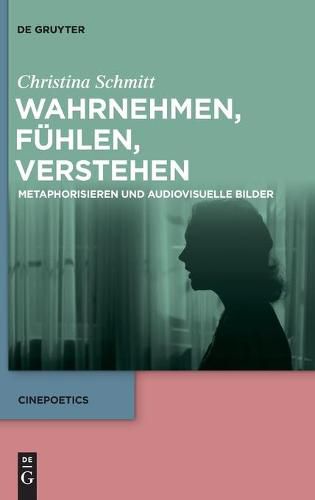Readings Newsletter
Become a Readings Member to make your shopping experience even easier.
Sign in or sign up for free!
You’re not far away from qualifying for FREE standard shipping within Australia
You’ve qualified for FREE standard shipping within Australia
The cart is loading…






This title is printed to order. This book may have been self-published. If so, we cannot guarantee the quality of the content. In the main most books will have gone through the editing process however some may not. We therefore suggest that you be aware of this before ordering this book. If in doubt check either the author or publisher’s details as we are unable to accept any returns unless they are faulty. Please contact us if you have any questions.
Film theory has always regarded metaphor as relevant for both constituting and understanding cinematic meaning. With its theses on embodied thought, the cognitive-linguistic theory of conceptual metaphors has initiated an upswing in research on metaphor and audiovisuality across disciplines.
By engaging with these premises, this book develops a transdisciplinary perspective on audiovisual images, metaphor, and cinematic meaning that is at the interface between linguistic metaphor research oriented towards language use and the theory of audiovisual media as movement-images developed in film studies. It positions itself critically towards works that take up a semiotic-linguistic approach or are influenced by cognitive film theory, and that are caught up in the code-model of the sender-receiver paradigm of communication. A universal in-depth semantics that disregards cinematic dynamics is hereby countered by the idea of metaphorizing as a spectatorial activity: a dynamic process of perceiving, feeling, and understanding modelled by the movement figurations of audiovisual images.
Through detailed analyses of diverse cinematic formats - from Hollywood films to political reports - this monograph shows that, and how, metaphorizing is a mode of cinematic thinking structured by the performativity of audiovisual images.
$9.00 standard shipping within Australia
FREE standard shipping within Australia for orders over $100.00
Express & International shipping calculated at checkout
This title is printed to order. This book may have been self-published. If so, we cannot guarantee the quality of the content. In the main most books will have gone through the editing process however some may not. We therefore suggest that you be aware of this before ordering this book. If in doubt check either the author or publisher’s details as we are unable to accept any returns unless they are faulty. Please contact us if you have any questions.
Film theory has always regarded metaphor as relevant for both constituting and understanding cinematic meaning. With its theses on embodied thought, the cognitive-linguistic theory of conceptual metaphors has initiated an upswing in research on metaphor and audiovisuality across disciplines.
By engaging with these premises, this book develops a transdisciplinary perspective on audiovisual images, metaphor, and cinematic meaning that is at the interface between linguistic metaphor research oriented towards language use and the theory of audiovisual media as movement-images developed in film studies. It positions itself critically towards works that take up a semiotic-linguistic approach or are influenced by cognitive film theory, and that are caught up in the code-model of the sender-receiver paradigm of communication. A universal in-depth semantics that disregards cinematic dynamics is hereby countered by the idea of metaphorizing as a spectatorial activity: a dynamic process of perceiving, feeling, and understanding modelled by the movement figurations of audiovisual images.
Through detailed analyses of diverse cinematic formats - from Hollywood films to political reports - this monograph shows that, and how, metaphorizing is a mode of cinematic thinking structured by the performativity of audiovisual images.